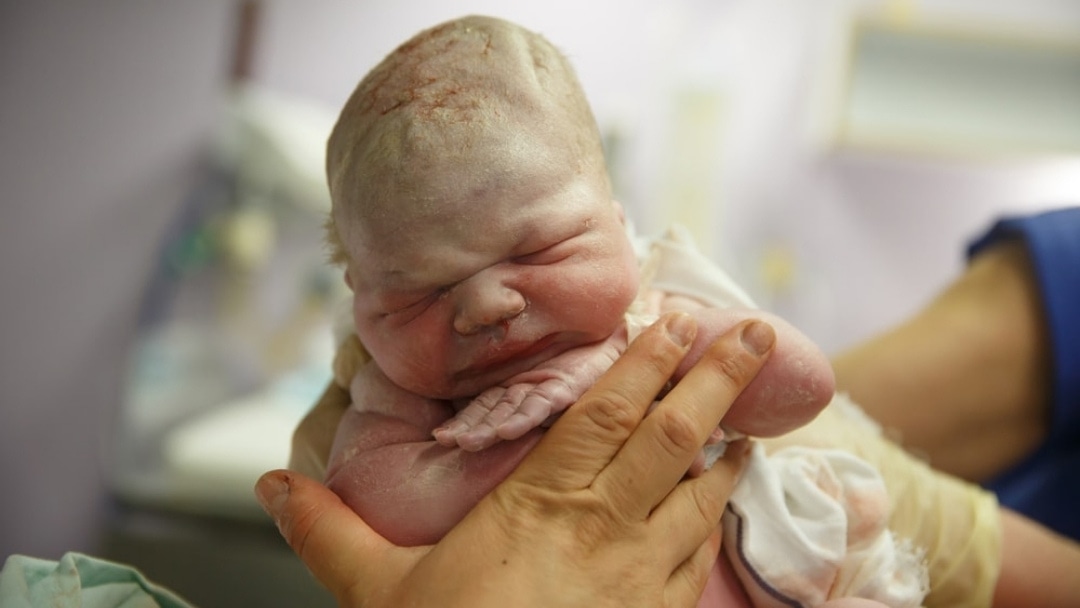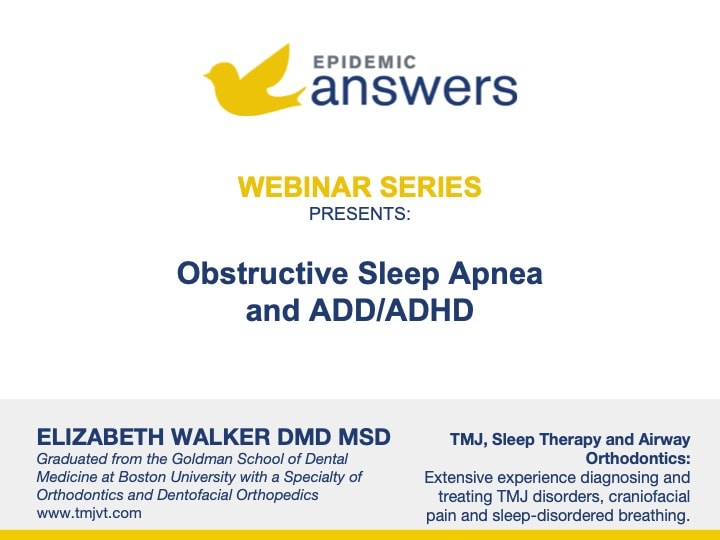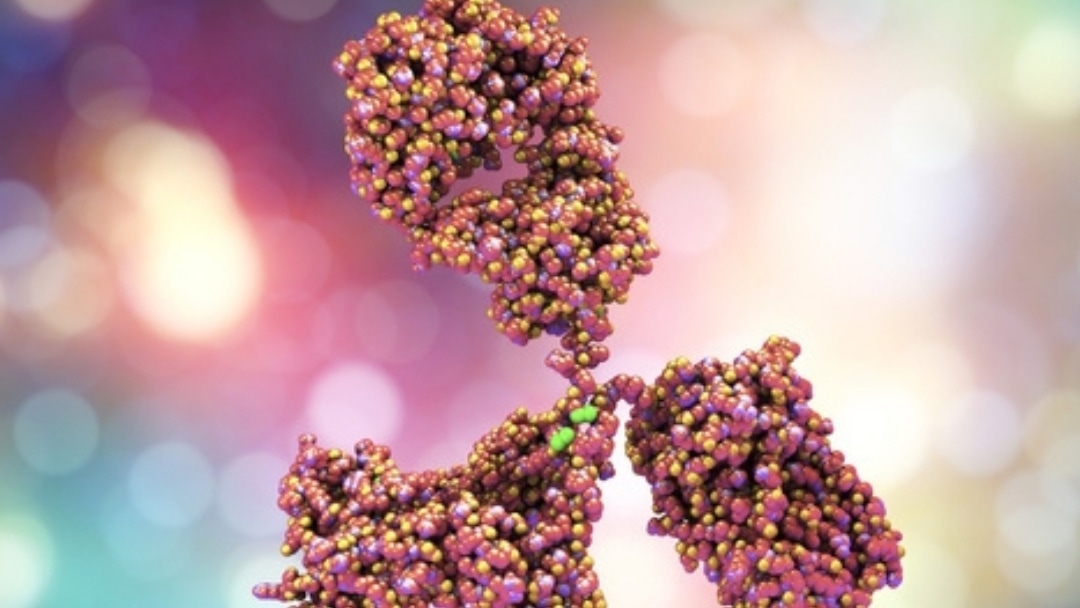What Is Attention Deficit Disorder?
Attention deficit disorder is a behavioral condition defined by specific subjective criteria in the latest edition of the Diagnostic and Statistical Manual of the American Psychiatric Association (DSM-V). This book describes three types of the disorder:
- Predominantly inattentive
- Predominantly hyperactive/impulsive
- Combined type
Symptoms are behavioral, and the diagnosis is determined by observations in at least two settings. The following symptoms are commonly associated with attention deficit disorder:
- Lack of focus
- Poor concentration
- Low self-esteem
- Easy frustration
- Explosive anger
Males are more frequently diagnosed with attention deficit disorder than females.
What Your Doctor May Tell You About Attention Deficit Disorder
Doctors believe that the cause(s) of attention deficit disorder is unknown. Treatments from an MD will likely address the most serious symptoms, and usually include medication and counseling. Attention deficit disorder can occur at any age. Children and adults with it have variations of symptoms, and thus require different priority in treatments.
Another Way to Think About Attention Deficit Disorder
Attention deficit disorder may or may not be a true disability. Attempts to have it classified for educational purposes have failed. Clearly, whatever is going on affects multiple systems, with different systems affected in each individual, related to his/her bio-individuality. The ability to attend can be related to:
- Visual processing issues
- Auditory processing issues
- Sensory processing issues
- Retained primitive reflexes
- Food sensitivities and intolerances
- A neurotransmitter imbalance such as catecholamines
- Environmental toxins such as lead and pesticides
- Airway issues such as obstructive sleep apnea
Evaluating all these areas, rebalancing the body, and bringing it back to health requires removing the possible triggers from the external and internal environment, and adding necessary nutrients through food and supplementation.
ADHD Healing Checklist
See a Myofunctional Dentist or Orthodontist
Many children with attention deficit disorder have narrow sinus passages that contribute to a lack of a proper amount of oxygen going to the brain. This may initially be caused by a tongue tie which can lead to an overarched and high palate. A large majority of these children snore and may have obstructive sleep apnea.
Myofunctional orthodontics and dentists using palate expanders such as an ALF device can remediate this issue.
Still Looking for Answers?
Visit the Epidemic Answers Practitioner Directory to find a practitioner near you.
Join us inside our online membership community for parents, Healing Together, where you’ll find even more healing resources, expert guidance, and a community to support you every step of your child’s healing journey.
Sources & References
Akinbami, L.J., et al. Attention deficit hyperactivity disorder among children aged 5-17 years in the United States, 1998-2009. NCHS Data Brief. 2011(70):1-8.
Alemany, S., et al. Prenatal and postnatal exposure to acetaminophen in relation to autism spectrum and attention-deficit and hyperactivity symptoms in childhood: Meta-analysis in six European population-based cohorts. Eur J Epidemiol. 2021 Oct;36(10):993-1004.
Archer, T., et al. Physical exercise alleviates ADHD symptoms: regional deficits and development trajectory. Neurotox Res. 2012;21(2):195-209.
Avella-Garcia, C.B., et al. Acetaminophen use in pregnancy and neurodevelopment: attention function and autism spectrum symptoms. Int J Epidemiol. 2016 Dec 1;45(6):1987-1996.
Baker, B.H., et al. Association of Prenatal Acetaminophen Exposure Measured in Meconium With Risk of Attention-Deficit/Hyperactivity Disorder Mediated by Frontoparietal Network Brain Connectivity. JAMA Pediatrics. 2020 Sep 28;e203080.
Bauer, A.Z., et al. Prenatal paracetamol exposure and child neurodevelopment: A review. Horm Behav. 2018 May:101:125-147.
Bauer, J., et al. Hyperactivity and impulsivity in adult attention-deficit/hyperactivity disorder is related to glutamatergic dysfunction in the anterior cingulate cortex. World J Biol Psychiatry. 2018 Oct;19(7):538-546.
Bennings, M.A., et al. Colonic transit times and behaviour profiles in children with defecation disorders. Archives of the Diseases of Childhood. 2004 Jan;89(1):13-6.
Bernfort, L., et al. ADHD from a socio-economic perspective. Acta Paediatr. 2008;97(2):239-45
Bertelsen, E.N., et al. Childhood Epilepsy, Febrile Seizures, and Subsequent Risk of ADHD. Pediatrics. 2016 Aug;138(2). pii: e20154654.
Blum, K., et al. Attention-deficit-hyperactivity disorder and reward deficiency syndrome. Neuropsychiatric Disease and Treatment. 2008 Oct;4(5):893-918.
Boat, T.F., et al. Prevalence of Learning Disabilities. Mental Disorders and Disabilities Among Low-Income Children. Washington (DC): National Academies Press (US); 2015 Oct 28. 16.
Borre, Y.E., et al. Microbiota and neurodevelopmental windows: implications for brain disorders. Trends Mol Med. 2014 Sep;20(9):509-18.
Bradstreet, J.J., et al. Biomarker-guided interventions of clinically relevant conditions associated with autism spectrum disorders and attention deficit hyperactivity disorder. Altern Med Rev. 2010 Mar;15(1):15-32.
Braun, J.M., et al. Association of Environmental Toxicants and Conduct Disorder in U.S. Children: NHANES 2001-2004. Environ Health Perspect. 2008 Jul;116(7):956-62.
Centers for Disease Control and Prevention. Data and Statistics on Children’s Mental Health. Accessed 2 Sep 2020.
Ceylan, M.F., et al. Changes in oxidative stress and cellular immunity serum markers in attention-deficit/hyperactivity disorder. Psychiatry Clin Neurosci. 2012;66(3):220-6.
Cortese, S., et al. Association between attention deficit hyperactivity disorder and asthma: a systematic review and meta-analysis and a Swedish population-based study. Lancet Psychiatry. 2018 Sep;5(9):717-726.
Cortese, S., et al. Attention-deficit/hyperactivity disorder, iron deficiency, and obesity: is there a link? Postgrad Med. 2014;126(4):155-70.
Darling, A.L., et al. Association between maternal vitamin D status in pregnancy and neurodevelopmental outcomes in childhood: results from the Avon Longitudinal Study of Parents and Children (ALSPAC). Br J Nutr. 2017 Jun;117(12):1682-1692.
Ende, G., et al. Impulsivity and Aggression in Female BPD and ADHD Patients: Association with ACC Glutamate and GABA Concentrations. Neuropsychopharmacology. 2016 Jan;41(2):410-8.
Erskine, H.E., et al. The global burden of conduct disorder and attention-deficit/hyperactivity disorder in 2010. J Child Psychol Psychiatry. 2014;55(4):328-36.
Egset, K., et al. Magno App: Exploring Visual Processing in Adults with High and Low Reading Competence. Scandinavian Journal of Educational Research. 07 Jan 2020.
Fletcher, J., National Bureau of Economic Research. The effects of childhood ADHD on adult labor market outcomes. Cambridge, MA: National Bureau of Economic Research; 2013. 25 p.
Joinson, C., et al. Psychological Difference Between Children With and Without Soiling Problems. Pediatrics. 2006 May;117(5):1575-84.
Hertz-Picciotto, I., et al. Organophosphate exposures during pregnancy and child neurodevelopment: Recommendations for essential policy reforms. PLoS Med. 2018 Oct 24;15(10):e1002671.
Hodgkins, P., et al. Risk of injury associated with attentiondeficit/ hyperactivity disorder in adults enrolled in employer-sponsored health plans: a retrospective analysis. Prim Care Companion CNS Disord. 2011;13(2).
Ji, Y. Association of Cord Plasma Biomarkers of In Utero Acetaminophen Exposure With Risk of Attention-Deficit/Hyperactivity Disorder and Autism Spectrum Disorder in Childhood. JAMA Psychiatry. 2020 Feb 1;77(2):180-189.
Kawatani, M., et al. Evaluation of oxidative stress status in children with pervasive developmental disorder and attention deficit hyperactivity disorder using urinaryspecific biomarkers. Redox Rep. 2011;16(1):45-6.
Liao, T.C., et al. Comorbidity of Atopic Disorders with Autism Spectrum Disorder and Attention Deficit/Hyperactivity Disorder. J Pediatr. 2016 Apr;171:248-55.
Liew, Z., et al. Use of Negative Control Exposure Analysis to Evaluate Confounding: An Example of Acetaminophen Exposure and Attention-Deficit/Hyperactivity Disorder in Nurses’ Health Study II. Am J Epidemiol. 2019 Apr 1;188(4):768-775.
Mahmoud, M.M., et al. Zinc, ferritin, magnesium and copper in a group of Egyptian children with attention deficit hyperactivity disorder. Ital J Pediatr. 2011;37:60.
Melillo, R., et al. Persistent Childhood Primitive Reflex Reduction Effects on Cognitive, Sensorimotor, and Academic Performance in ADHD. Front Public Health. 2020 Nov 17;8:431835.
Millichap, J.G., et al. The diet factor in attention-deficit/hyperactivity disorder. Pediatrics. 2012 Feb;129(2):330-7.
Morris, C.R., et al. Syndrome of allergy, apraxia, and malabsorption: characterization of a neurodevelopmental phenotype that responds to omega 3 and vitamin E supplementation. Alternative Therapies in Health and Medicine. Jul-Aug 2009;15(4):34-43.
Mossin, M.H., et al. Inverse associations between cord vitamin D and attention deficit hyperactivity disorder symptoms: A child cohort study. Aust N Z J Psychiatry. 2017 Jul;51(7):703-710.
Parker, W., et al. The Dangers of Acetaminophen for Neurodevelopment Outweigh Scant Evidence for Long-Term Benefits. Children (Basel). 2023 Dec 29;11(1):44.
Pelsser, L.M., et al. Effects of a restricted elimination diet on the behaviour of children with attention-deficit hyperactivity disorder (INCA study): a randomised controlled trial. Lancet. 2011 Feb 5;377(9764):494-503.
Peltier, M.R., et al. Maternal Hypothyroidism Increases the Risk of Attention-Deficit Hyperactivity Disorder in the Offspring. Am J Perinat. 2020 Oct 21.
Phillipot, G., et al. Paracetamol (Acetaminophen) and its Effect on the Developing Mouse Brain. Front Toxicol. 2022 Mar 22:4:867748.
Physician’s Postgraduate Press. Managing ADHD in Children, Adolescents, and Adults With Comorbid Anxiety in Primary Care. The Primary Care Companion to The Journal of Clinical Psychiatry. 2007;9(2):129-38.
Sabuncuoglu, O. Understanding the relationships between breastfeeding, malocclusion, ADHD, sleep-disordered breathing and traumatic dental injuries. Med Hypotheses. 2013;80(3):315-20
Scassellati, C., et al. Biomarkers and attention deficit/hyperactivity disorder: a systematic review and meta-analyses. J Am Acad Child Adolesc Psychiatry. 2012;51(10):1003-19 e20.
Schmitt, J., et al. Atopic eczema and attention-deficit/hyperactivity disorder in a population-based sample of children and adolescents. JAMA. 2009 Feb 18;301(7):724-6.
Sucksdorff, M., et al. Maternal Vitamin D Levels and the Risk of Offspring Attention-Deficit/Hyperactivity Disorder. J Am Acad Child Adolesc Psychiatry. 2019 Dec 18.
Swanson, J.M., et al. Etiologic subtypes of attention-deficit/hyperactivity disorder: brain imaging, molecular genetic and environmental factors and the dopamine hypothesis. Neuropsychology Review. 2007 Mar;17(1):39-59.
Telford, C., et al. Estimating the costs of ongoing care for adolescents with attention-deficit hyperactivity disorder. Soc Psychiatry Psychiatr Epidemiol. 2013;48(2):337-44
Verlaet, A.A., et al. Nutrition, immunological mechanisms and dietary immunomodulation in ADHD. Eur Child Adolesc Psychiatry. 2014;23(7):519-29.
Wang, H.L., et al. Case-Control Study of Blood Lead Levels and Attention Deficit Hyperactivity Disorder in Chinese Children. Environmental Health Perspectives. 2008 Oct;116(10):1401-6.
Warner, B.B. The contribution of the gut microbiome to neurodevelopment and neuropsychiatric disorders. Pediatr Res. 2019 Jan;85(2):216-224.
Weiss, M.D., et al. Effectiveness outcomes in attention-deficit/hyperactivity disorder. J Clin Psychiatry. 2006;67 Suppl 8:38-45.
Woodbury, M.L., et al. The relationship of prenatal acetaminophen exposure and attention-related behavior in early childhood. Neurotoxicol Teratol. 2024 Jan-Feb:101:107319.
Zablotsky, B., et al. Prevalence and Trends of Developmental Disabilities among Children in the United States: 2009-2017. Pediatrics. 2019 Oct;144(4):e20190811.
Zaigham, M., et al. Prelabour caesarean section and neurodevelopmental outcome at 4 and 12 months of age: an observational study. BMC Pregnancy and Childbirth. 2020 (20)564.
Zhao, L., et al. Acetaminophen causes neurodevelopmental injury in susceptible babies and children: no valid rationale for controversy. Clin Exp Pediatr. 2024 Mar;67(3):126-139.
Resources
Articles
Denney, Amy. Can You Resolve the Root Cause of ADHD? The Epoch Times, November 5, 2022.
Books
Bock, Kenneth. Healing the New Childhood Epidemics: Autism, ADHD, Asthma, and Allergies: The Groundbreaking Program for the 4-A Disorders. New York, NY. Ballantine Books, 2008.
Brandes, Bonnie. The Symphony of Reflexes: Interventions for Human Development, Autism, ADHD, CP, and Other Neurological Disorders, 2016.
Campbell-McBride, Natasha. Gut and Psychology Syndrome: Natural Treatment for Autism, Dyspraxia, A.D.D., Dyslexia, A.D.H.D., Depression, Schizophrenia, 2010.
Crook, William. Help for the Hyperactive Child: A Practical Guide Offering Parents of ADHD Children Alternatives to Ritalin. Square One, 2007
Giustra-Kozek Jennifer. Healing Without Hurting: Treating ADHD, Apraxia, and Autism Spectrum Disorders Naturally and Effectively Without Harmful Medication. Howard Beach, NY: Changing Lives Press, 2014.
Guyol, G. Who’s Crazy Here?: Steps for Recovery Without Drugs for: ADD/ADHD, Addiction & Eating Disorders, Anxiety & PTSD, Depression, Bipolar Disorder, Schizophrenia, Autism. Stonington, CT: Ajoite Pub., 2010.
Lambert, Beth, et al. Brain Under Attack: A Resource for Parents and Caregivers of Children with PANS, PANDAS, and Autoimmune Encephalitis. Answers Publications, 2018.
Mackarness, Richard. These Can Make You Ill: Not All in the Mind. BN Publishing, 2018.
Philpott, William H., et al. Brain Allergies: The Psychonutrient and Magnetic Connections. Los Angeles: Keats Publishing, 2000.




